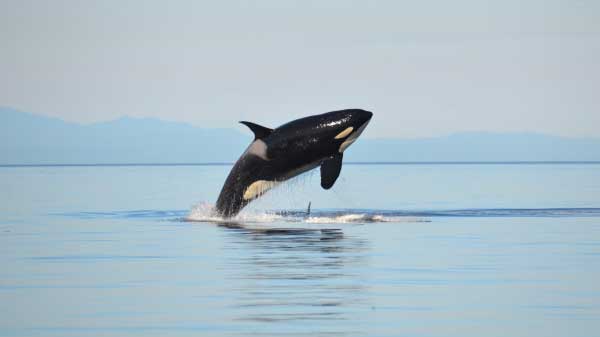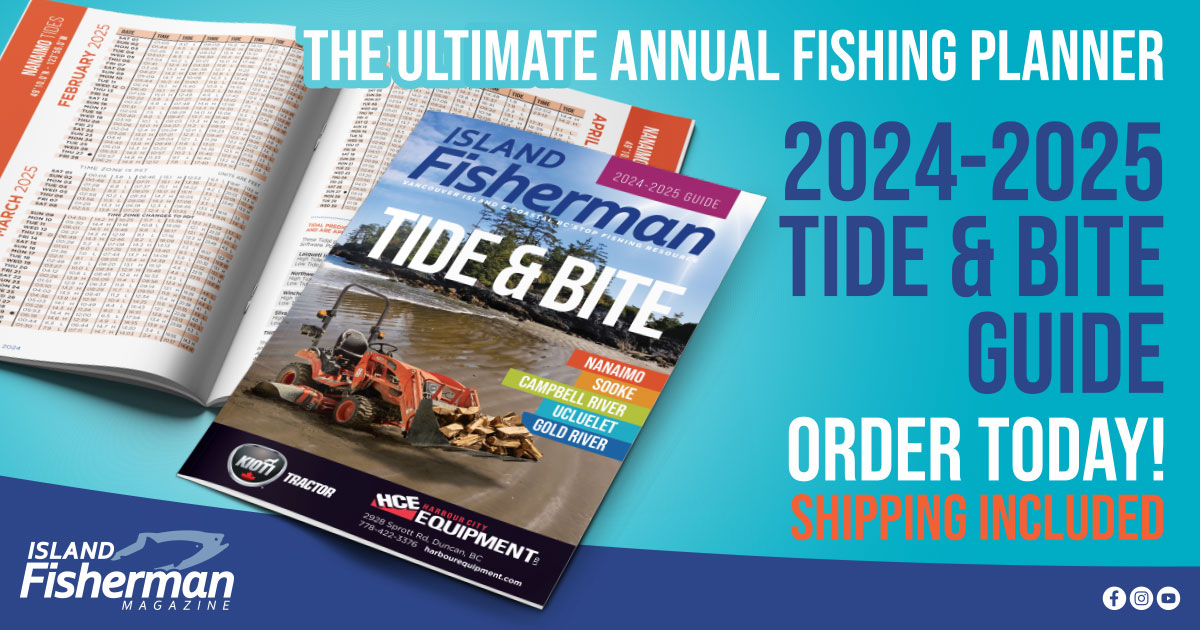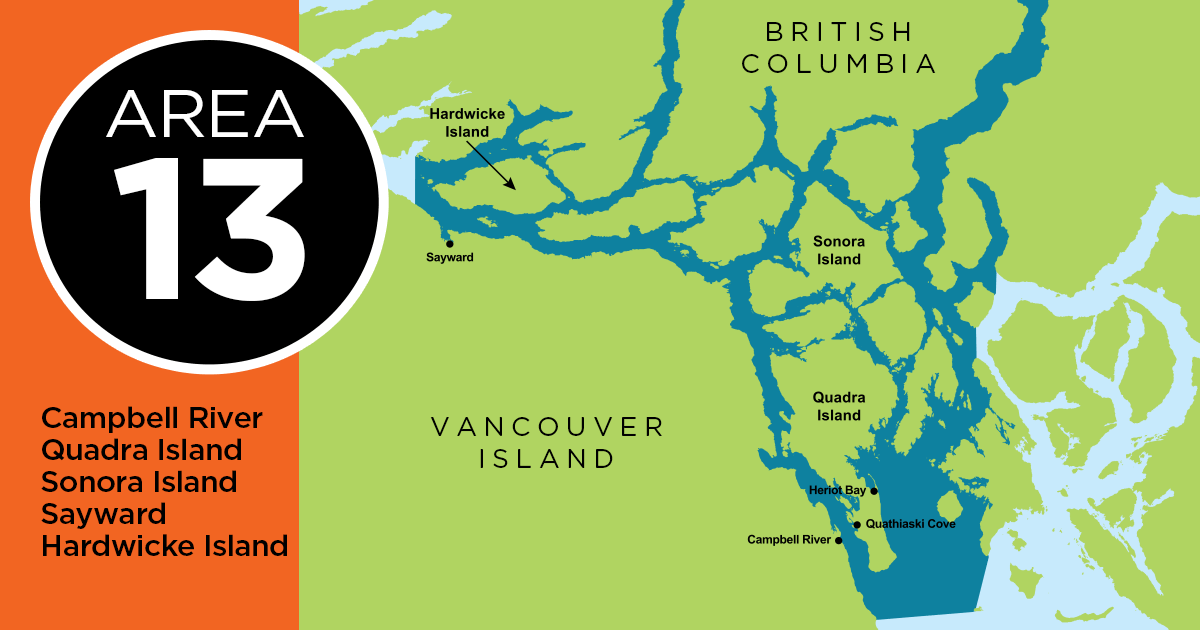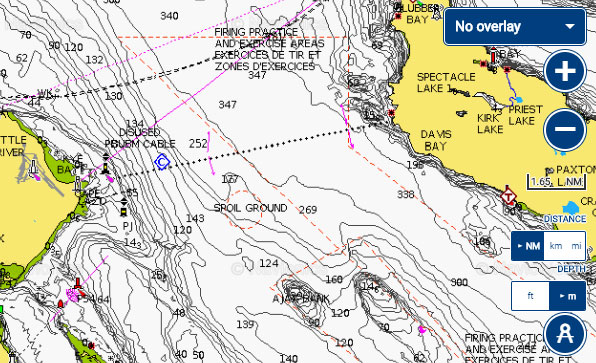
After nearly three months of rushed analysis and consultation, on May 30 the DFO released fishery notice #0428. It is likely unprecedented in the history of BC fisheries management in its scope, covering both commercial and recreational Chinook fisheries in many areas on Canada’s Pacific coast, with only the recreational fisheries on the west coast of Vancouver Island and the central coast/upper Johnstone Strait not included. This article will focus on the management changes in the waters around the south and east sides of Vancouver Island.
Although the management changes on the south coast are primarily intended to lower the exploitation rate (ER) on Fraser River stocks, the situation in Juan de Fuca Strait is complicated by the overlapping issue of Southern Resident Killer Whales (SRKW), for which shortage of preferred prey is said to be one of three acute challenges facing these animals—the others being noise in their environment impairing ability to hunt, and high levels of toxins in their bodies impairing their overall health.
That the SRKW prefer to eat less, rather than travel a short distance to areas with a seasonal abundance of Chinook, or to eat fish smaller than their preferred size is apparently considered the fault of the recreational fishery; the only action the federal government has taken to sustain these animals is to virtually eliminate the recreational fishery in large parts of Juan de Fuca Strait.
The imposition of a finfish closure between Otter Point and San Juan Point, June 1 to September 30 in which no hook and line fishing for any species can occur, can only be described as punitive. For example, this closure eliminates an important recreational halibut fishery that has nothing to do with sustaining either Chinook or killer whales. However, no action has been taken to address the other issues which trouble SRKW (e.g. whale watching). The frustration doesn’t end there. The DFO has extended the seasonal Chinook maximum size restrictions near the bottom end of Vancouver Island to the end of July.

In late winter, the decision was made to lower the ER on Chinook stocks of concern by a range of 25-35% against recent year averages. The DFO decided to use information from three indicator stocks: Nicola, Shuswap/South Thompson, and Harrison – in efforts to develop measures for Fraser Chinook in general. Nicola River Chinook are stream-type fish that primarily rear in the open ocean, the majority of which migrate back through Juan de Fuca Strait as maturing fish headed to the Fraser River. Actions have been in place for a decade to minimize the already low recreational ER on these fish and little more can be done without closing the fishery altogether, as has been the case in the Fraser River itself for much of the summer.
South Thompson and Harrison Chinook stocks are the same species with similar freshwater life histories in the same very large watershed, but these stocks have very different ocean distribution patterns. South Thompson Chinook are known as a far-north migrating stock and spend much of their time at sea rearing around Haida G’waii and in Southeast Alaska. These fish migrate primarily in July and August around both sides of Vancouver Island on their return to the Fraser River. In contrast, Harrison Chinook are relative ‘homebodies’ (resident), and mostly encountered within 200 km of the river, predominantly in the Strait of Georgia and to a lesser extent off South West Vancouver Island (SWVI).
This difference in ocean distribution has meant that the required reduction in ER for the South Thompson fish will take place on the north coast as a result of actions taken there to achieve the same results for Skeena and Nass chinook, with additional benefits as they migrate through inner south coast waters where management changes are focused primarily on Harrison Chinook.
The Sport Fishing Advisory Board (SFAB) worked hard in recent months with key DFO stock assessment staff to develop proposals that would maximize opportunity in the recreational fishery and be responsive to the conservation requirement. However, having started this planning exercise far too late, the DFO simply ran out of time and fishery managers took the simplistic approach and reduced the daily limit in the Strait of Georgia from 2 to 1 Chinook per angler, per day, June 1 to September 30. Considerations of a more strategic approach applying management changes only to those times and areas showing a prevalence of Harrison Chinook or the maintenance of a two fish daily limit but with only one being an unmarked (presumed to be wild) fish fell by the wayside.
In their overall management proposal, the SFAB submitted four terminal zones: Campbell River, Puntledge, Big Qualicum, and Capilano, all around estuaries with strong hatchery returns in which encounters with Fraser Chinook stocks are infrequent, and in which full limits would apply. Also, because of the overall ER reduction on all Chinook stocks resulting from the bag limit change, the SFAB has advocated removal of the five time-sensitive and area restricted zones in the northern Strait of Georgia intended to lower the ER on Cowichan chinook, and discussion of changes to the terminal closures in Areas 17 and 18. At the time of writing this article, there has been no response from DFO to these proposals.
Against the background of management, changes developed at short notice and announced in fishery notice #0428, the forward-looking view for the recreational fishery in BC is deeply troubling. The immediate economic consequences will be considerable, and the long-term reputation of BC as a recreational fishing destination has been severely damaged, with economic consequences to come. With no new initiatives to enhance fish stocks or habitats, it’s hard to avoid the conclusion that the DFO views the recreational fishery as low hanging fruit, to be picked off as a way to avoid more creative and comprehensive measures to sustain this high-value fishery while at the same time being responsive to the needs of the fish and marine species that depend on them. The federal government needs to do better—much better if the BC recreational fishery has any hope of thriving in the future.
2 Comments
Leave A Comment
Visit the Store
$34.99
$34.99
Featured Catch

Father Day - Catch & Release 40 lb Hatchery male, North Island. Taylor and Ray Logan








After 25 plus years of volunteering and working to increase Chinook Salmon stocks in the Sooke area, I feel betrayed. The only thing this closure has done is produce economic hardship to Sooke.
This year alone the local volunteer enhancement groups have released over 1 million Chinook fry and smolts to the Sooke area. What has DFO done axed our opportunity to catch the fish we have released.
Sure some of the fish we are releasing are to help the SRKW, but the local fish don’t show up till August. With only about 12 sightings last summer these whales are smart enough to find fish elsewhere if there is no fish.
As a Salmon enhancement volunteer it makes me wonder why I am doing this?
DFO thank you for stabbing us in the back and doing nothing.
As of today there will be no longer a salmon head recovery depot at my house. I will no longer sell salmon licenses from my place .
How many fish have whale watching companies returned to the ocean. The constant surveillance and harassment by these boats cannot add anything but stress to the WILD orcas. DFO and it’s bureaucracy should look at real solutions. One would be massive funding of rearing facilities. Two habitat restoration. To date volunteers like our sooke friends have carried out the majority of these activities. DFO your biting the hand that feeds you and the whale. Your efforts to date fall well short of real solutions, the whale is in big trouble under your leadership. Personally disappointed!